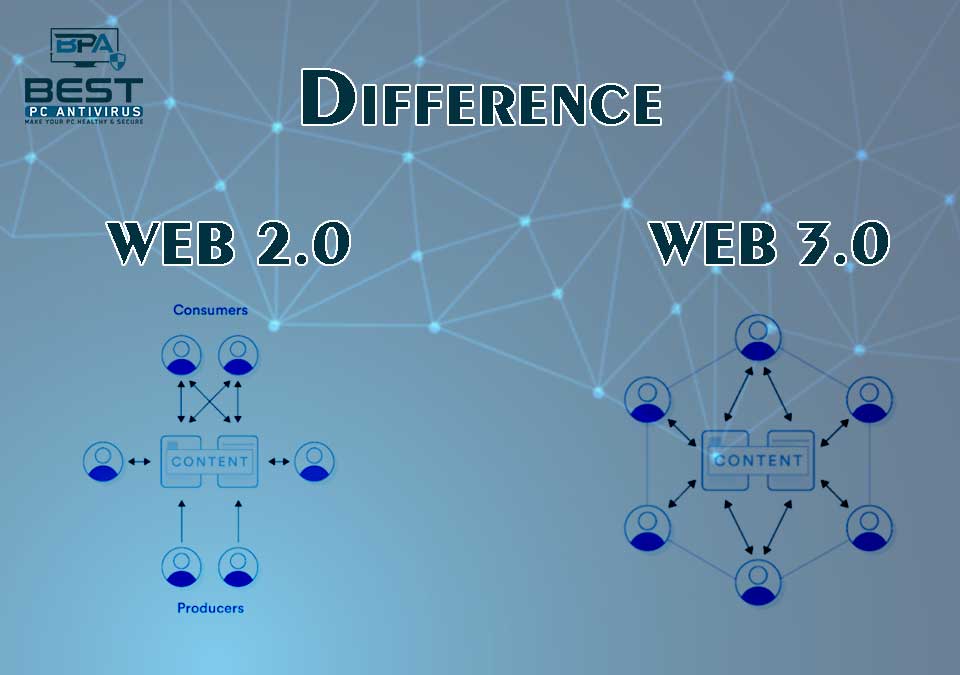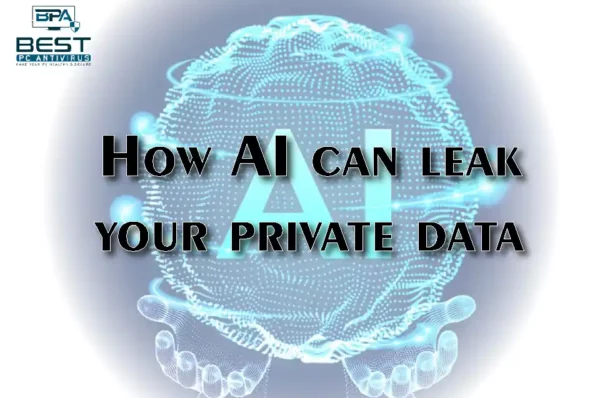Web2.0 & Web3.0 : Web 2.0 refers to the second generation of the World Wide Web, characterized by a greater emphasis on user-generated content, collaboration, and social interaction through websites and web-based applications. This era brought popular websites such as Facebook, YouTube, and Wikipedia.
Web 3.0, also known as the “Semantic Web,” represents the next evolution of the internet, with a focus on intelligence, context awareness, and machine-readable data. It aims to create a more interconnected and intelligent web where machines can understand and interpret the meaning of data, enabling better search results, personalized experiences, and automation of various tasks. Key technologies driving Web 3.0 include artificial intelligence, the Internet of Things, and blockchain.
The Internet has progressed fleetly from the early days of Web1, which included static textbooks and illustrations, to the current interpretation – Web2. We’re presently entering the Web3 period, in which value and data will fluently move across decentralized platforms with distributed power and control. But, what difference does Web3 point out? How is it different from Web2? Read on to learn further about these two generalities, their differences, and possible operations. Web3 is presently picking up brume in the online space. Its rising fissionability is commensurate to that of blockchain and the security technology’s broad acceptance and relinquishment. Now that we know Web3 will come to the norm sooner or latterly, it’s time to look at the former generations, their distinctions, and more. As the technology is still new, learning about the concept may help druggies grasp it better. Alexandra Pitkevich, star for business consulting, EPAM Systems, shortly defines the two internet duplications. “Web2.0 brought the arrival of social media, remonstrating off the age of stoner-generated content. former duplications were united by data being stored on waiters possessed by massive pots and institutions. Indeed, if the stoner was the original creator of the data, they weren’t eventually the true proprietor.” Web2.0 & Web3.0, Web2.0 & Web3.0
Intro to web 2
Web2 (2006-present) Now we should move on to the coming generation of the internet, which is presently in use worldwide. Web2.0 has revolutionized the web and its confederated diligence. This web interpretation has made it exceedingly simple for druggies to collect, induce, and distribute huge quantities of data with just one click. Hundreds of new apps are introduced to the phone’s app store every day. Also, phones have an erected- camera that produces images that most genuine cameras on the Web 1 couldn’t indeed imagine many times agone. The stylish point of Web2.0 is that it allows druggies to produce content and distribute it on global networks. Social media channels similar to Instagram and Facebook and other videotape streaming operations, blog advertisement, podcasts, and social bookmarking are all exemplifications of Web2.0 platforms. This period is also known for the ease with which music and videotape particles participated. Web2.0 & Web3.0
Intro to web 3
Web3 (presto approaching) Web3.0 is the internet’s rearmost and most talked-about generation. Following2.0, the third replication, grounded on sophisticated software programs similar to artificial intelligence, will enter the arena of combatants. It aspires to give a secure and data-driven UI that caters to every stoner. Blockchains, metaverse, and Semantic Web are all anticipated to be abused through Web3. utmost of the capabilities of Web3 is formerly present in Web2.0, so druggies will presumably be puzzled. What’s new in it, also? Yes, these features are formerly present in the contemporary internet generation and further are fleetly getting hardwired, but there’s further to it. Because of the rising relinquishment of blockchain technology across colourful apps and spots, the the3.0 interpretation is getting more evolved. The main distinction between Web 2 and Web 3 is that Web3.0 is erected on decentralization. druggies will enjoy their content and have complete control over using the internet. As we progress through the composition, we will discover further differences. Web2.0 & Web3.0
What’s the difference between Web2 & Web3?
Web2.0 and Web3.0 are analogous technologies with analogous backgrounds, but they approach challenges else. The abecedarian distinction is that Web2.0 focuses on reading and writing content, whereas Web3.0 focuses on creating content (Semantic Web). The ultimate is much better, exercising technology to grease information cloverleaf amongst web druggies while contemporaneously enhancing cybersecurity.
While Web2 aims to connect people, Web3 combines this data in meaning along with adding trust. This happens because of decentralization. further differences are listed below
-
Currency
Payments on Web 2 are made in edict plutocrat. Government-issued plutocrat, similar to the US bone, is used during deals. Web3, on the other hand, uses cryptocurrencies similar to Ethereum or Bitcoin, which are translated digital currencies to fund deals.
-
Content power
With Web2.0, the network assumes control of the information storehouse, causing access issues and enterprises about the obscurity and protection of online data. Web3.0 solves this problem by letting data be changed in several locales contemporaneously.
-
Speed
Web 2 transfers are quicker than Web 3 transfers. Web 2 reviews for information kept in a fixed place, generally on a single garcon, using HTTP in unique web addresses. Web3, on the other hand, assigns power to multitudinous others (decentralization).
-
Technology
The most common Web2 technologies include – AJAX and JavaScript, HTML5, and CSS3. ML, deep literacy, semantic web, and decentralized technologies power Web3.
-
Operation
Web2 includes podcasts, social bookmarking, blogs, RSS feeds, and videotape spots. Web3 incorporates AI and machine literacy-powered apps, virtual worlds, and 3D doors. What are the benefits of Web3? The decentralized structure of Web3 is its primary advantage or value for druggies. consolidated networks won’t be awarded in the coming generation of the internet. A popular atmosphere where spending is more transparent thanks to public distributed checks will be fair and secure. Commercial corruption will gradationally drop as a result of this. It’s fair to say that Web3 has the implicit to ameliorate commercial and government operations. still, due to the scale of the shift, it’ll nearly clearly invite review. While decentralization is one of the biggest benefits that Web3 could offer, the other bones include
-
Further sequestration
Web3.0 will prioritize security and sequestration over surveillance and control. druggies will have complete control over their data. They have the option of sharing or keeping the information secret.
-
Security
Due to blockchain technology and its independent structure, it’ll also be safer than previous internet performances. Hackers will find it exceedingly tough to exploit the network, and indeed if they do, their conditioning will be logged. In a decentralized system, hacks are still presumptive, although utmost blockchains have developed defenses against such a circumstance.
-
Ubiquity
Multiple apps may pierce data, each device is linked to the web, and services can be penetrated anywhere.
-
Semantic Web
The Semantic Web is the coming phase in the elaboration of the internet. Semantic Web enhances the whole experience of the web-grounded platforms. druggies may use semantic technologies to produce online data depositories, define vocabularies, and establish data handling rules. The technologies used to enable linked data are – RDF, OWL, SKOS, and SPARQL.
-
Connectivity
Data is privately associated with Web3.0 due to semantic content, leading to a bettered stoner experience that goes to a new position of connectivity that harnesses all accessible data.
Is web3 a metaverse
Web3 and the metaverse pledge to change the way we use the Internet; but indeed though they’re nearly affiliated, they don’t mean the same thing. One will polarize the Internet, and the other will produce a virtual “new world” in 3D.
Web3 and the metaverse are two buzzwords about the future of the Internet. It’s easy to find lots of information about them on websites, in technical and mainstream media, and on social networks. But it can occasionally be tricky to understand what each one means, and how they are different.
These two inventions could change the way we interact online and are still developing at the design stage. Their factual eventuality will substantially depend on how people use them. Web3 and the metaverse will calculate largely on blockchain technology, which is used to produce, store and transfer data and digital means in a secure, decentralized manner with no central garcon.
In the metaverse, asset portability and tone-managed decentralized identity will depend on blockchain technology.
The difference between web3 and the metaverse might not be clear because they’re under development with blockchain technology. In general, the metaverse is a new virtual 3D ecosystem. It offers druggies an immersive experience analogous real world. It enables them to work, study, play, buy and vend and do other everyday effects nearly.
The metaverse creates a “new world” online still, web3 decentralized a structure for druggies to produce and manage digital means (in the metaverse and away).
Principally, for the metaverse to come what it’s supposed to be, it needs druggies to transfer everyday conditioning to it in 3D. still, the commerce between actors will lead to a new digital frugality, with business and social commerce grounded on digital means that web3 will decentralize to enable secure deals with NFTs If this occurs.
FAQ
How are Web3 and metaverse related?
Web3 and the metaverse are inseparably linked to each other. The metaverse will continue to live in the face and deep webs, indeed though Web3 is still constantly appertained to as decentralized; still, the metaverse will remain centralized in terms of social media controlling platforms
What’s the future of Web3?
The future of social apps on web3 would be more analogous to the normal social apps of the moment with a focus on simplicity. Web3 social apps may also cost the attention of crypto suckers and the young generation of internet druggies in the future. Web3 can gain a lot of traction in the future with play-to-earn gaming.
What conditioning can you pierce nearly in the metaverse?
Separate virtual worlds can attend in a metaverse, where denizens can engage in digital conditioning via an icon. Some of the being guests in moment’s Metaverse include playing games, visiting virtual musicales, meeting musketeers, and indeed buying virtual land.
Read More :- Difference between Internet Security and Antivirus?




